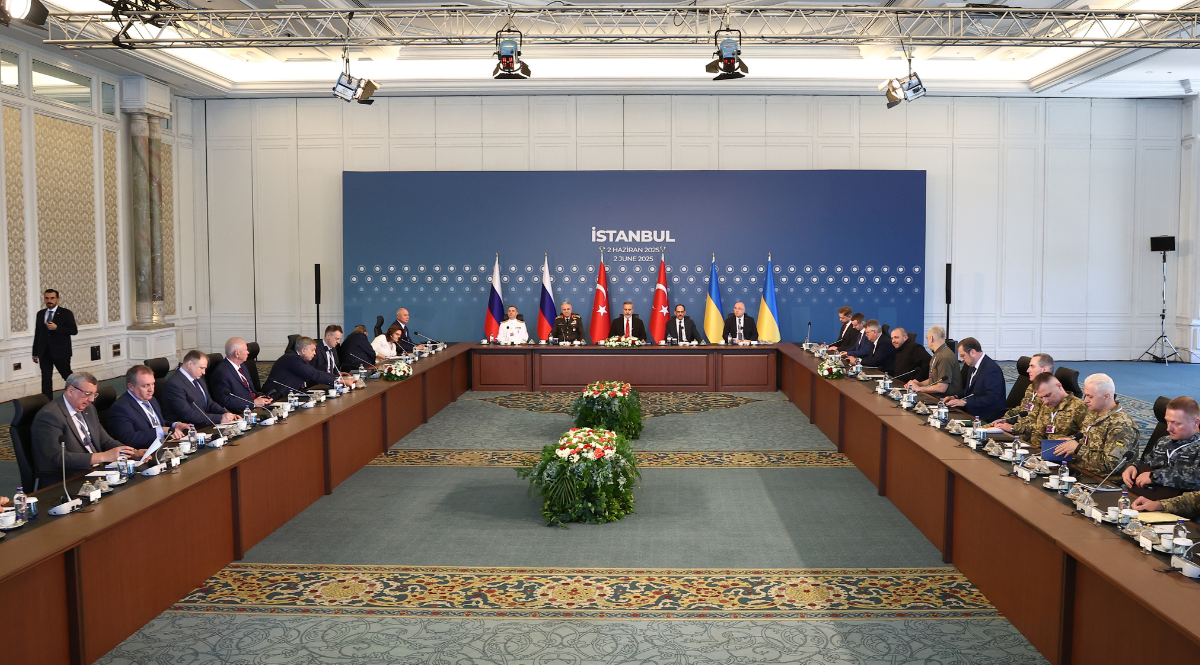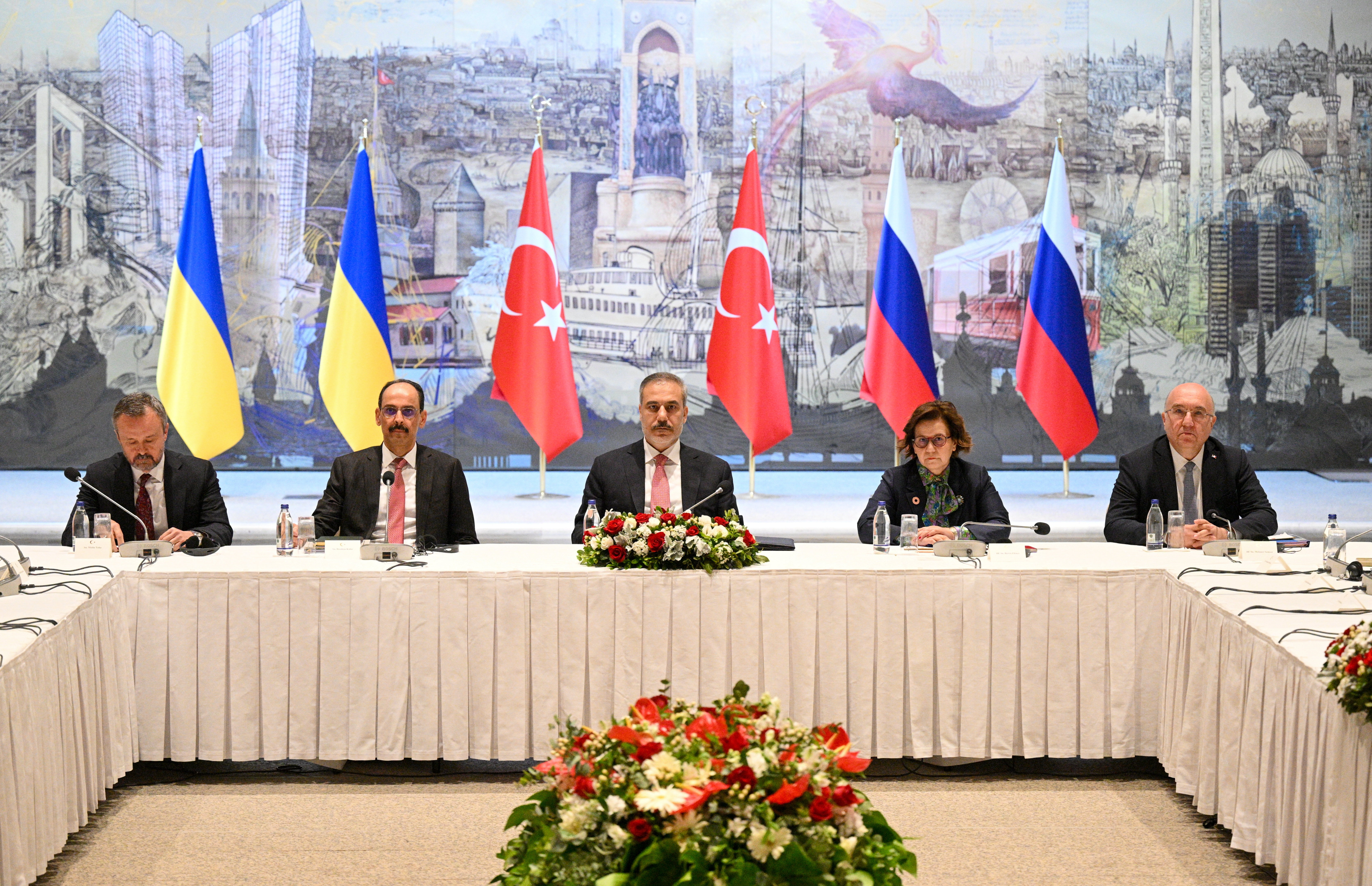Ukraine-Russia Meet for Second Round of Talks in Istanbul
The second round of Ukrainian-Russian peace negotiations, which took place on 2 June in Istanbul, did not result in a breakthrough. Both sides presented their expectations to bring the war to an end, but both overwhelmingly opposed the other’s demands, which means that any further negotiations will be protracted and a quick end to hostilities should not be expected.
 credit: Alexander Ryumin / Zuma Press / Forum
credit: Alexander Ryumin / Zuma Press / Forum
What is Ukraine’s position?
Already before the start of the negotiations the Ukrainian side published its proposed conditions for the implementation of a full ceasefire. These included demands that Russia return illegally removed Ukrainian children (the Ukrainian delegation handed over a list of names), release all civilian hostages, and exchange prisoners of war on an “all for all” basis. Ukraine also stressed that it wanted credible security guarantees and that it would be able to decide for itself on its membership of political and military alliances. The document also includes the expectation that the demarcation line will only be the basis for territorial negotiations. The Ukrainian side also wants further negotiations to take place with the participation of the United States and European countries, with the U.S. responsible for monitoring the ceasefire, and the final peace agreement to be worked out with the participation of the leaders of Ukraine and Russia. The memorandum mostly consisted of demands and proposals that Ukraine had made earlier, and some, such as putting the U.S. in charge of monitoring the ceasefire, were more specific. Most of the demands it presented, including those related to membership of international alliances and the presence of Western troops on Ukrainian territory, are unacceptable to the Russians, who insist that these issues are the primary reasons for launching the so-called special military operation.
What did the Russians propose?
Russia in Istanbul expressed its expectations, among others, of international recognition of Crimea and the Kherson, Donetsk, Luhansk, and Zaporizhzhia regions as part of Russia and the withdrawal of Ukrainian troops from their territories, as well as the neutrality of Ukraine and a prohibition on its joining military alliances and the stationing of third-country troops and military bases on its territory. Russia also wants confirmation of Ukraine’s status as a non-nuclear state and a reduction in the size of the Ukrainian armed forces and the armaments they possess. It also demands a guarantee of the rights of the Russian-speaking population and the lifting of restrictions on the Russian Orthodox Church, the lifting of sanctions by Ukraine, the abandonment of any claims related to military hostilities, and the restoration of bilateral relations. The Russian side also detailed steps to establish peace, including the holding of new elections in Ukraine even before peace is achieved. The Russian demands are mostly unacceptable to the Ukrainian side and their nature is significantly reminiscent of the Minsk agreements and the Russian proposals of spring 2022, through which Russia wanted to have a direct influence on the shaping of the political situation in Ukraine.
How has the frontline situation changed since the previous meeting?
Since 16 May, when the first round of Ukrainian-Russian talks took place, Russia has stepped up operations on the frontline, particularly in the Sumy direction. It has seized a number of villages close to the border with the Kursk region and created a kind of buffer zone there, and a further offensive will aim to paralyse Sumy with drones and artillery. The Russians have also intensified their shelling of all Ukrainian territory. Meanwhile, the day before the negotiations, Ukraine, as part of Operation Spiderweb, carried out drone attacks on five airfields inside Russia, resulting in up to 40 aircraft (including Tu-160, Tu-22, and Tu-95 strategic bombers) being hit, according to Ukrainian estimates. The Security Service of Ukraine estimated Russian losses at more than $7 billion. Some of the destroyed aircraft will not be able to be rebuilt by Russia due to a lack of adequate production capacity. The operation was unprecedented and was intended to demonstrate Ukraine’s ability to put pressure on Russia, and those who carried it out were safely evacuated from Russia. Its purpose was also to reduce the ability of Russian strategic aviation to attack civilian targets in Ukraine and thereby put pressure on Ukrainian society.
What has been agreed and what are the prospects for the talks?
During the Istanbul talks, only the exchange of seriously wounded prisoners of war and those under the age of 25 was agreed. It is not clear, however, whether Ukraine will agree to the three-day truce proposed by Russia to collect the bodies of soldiers. The two sides have also not commented on the prospects for further talks. However, given the content of the memoranda they presented, it will be impossible to negotiate any agreement with the current shape of the expectations and demands of both sides. The territorial shape of Ukraine and its ability to conduct an independent domestic, foreign and defence policy will be particularly controversial. The axis of the dispute will also be whether the ceasefire should be the start of the talks or their culmination, immediately preceding the signing of a peace agreement. For the moment, the two sides can only find a compromise on the exchange of prisoners and detainees or the confirmation of Ukraine’s non-nuclear status. Further negotiations will therefore be protracted, which is what Russia will be aiming for, hoping to weaken Ukraine as much as possible. Their success will also depend on the policy of Western countries, including the U.S., and how far they are prepared to support Ukraine and introduce sanctions against Russia for its unwillingness to compromise and end the war.



.jpg)
(1).png)
